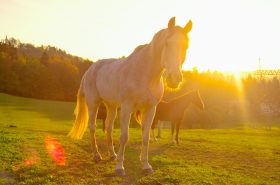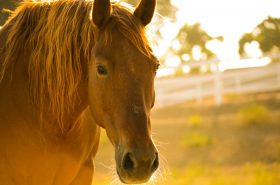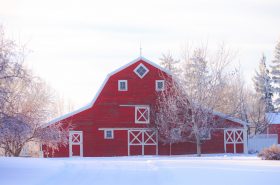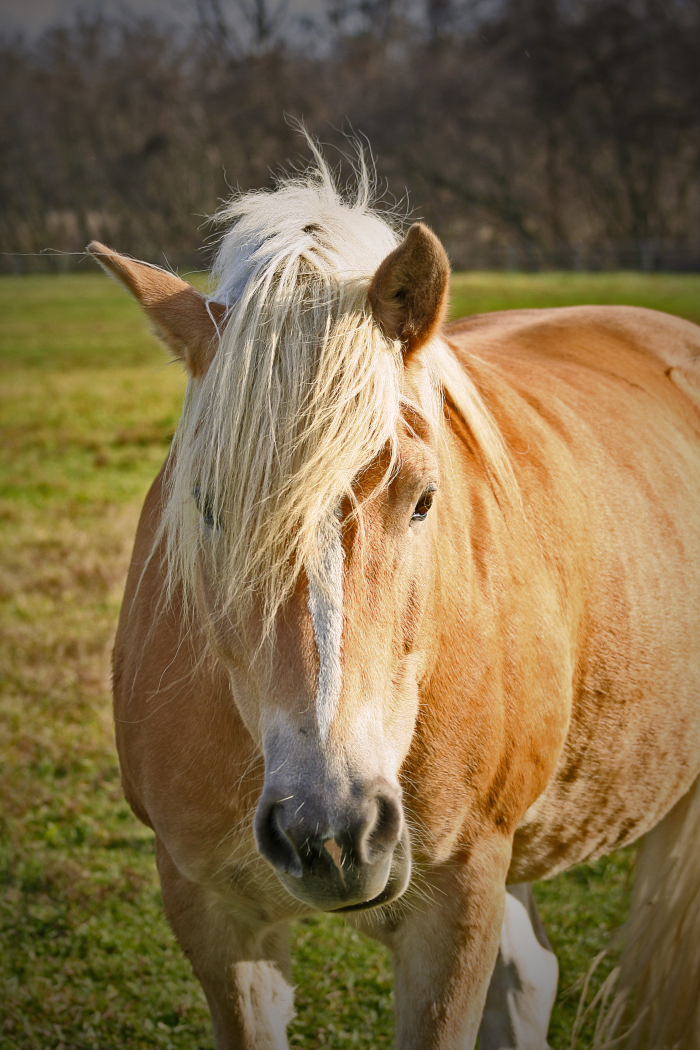
I have received many questions from horse owners, throughout the years at Ramm. The variety of these questions are so varied. They range from every horse product – fencing and stall installation to ‘how to take care of horses’. Sometimes the questions are so loaded that my answers are filled with many ideas or tips. One such question was recently sent to me, and as you will see, these ideas are not just limited to new horse owners. It’s also a good reminder that from one horse person to another, there is so much that we can do to ‘give’ to others to help them get started on the right foot and ‘hoof’! Read on and find out what this PA ‘future horse owner’ wants to know!
The question that sparked this article comes from Colleen D. located in Fombell, PA. Her question was regarding proper pasture and fencing for a horse as well as a suitable barn. Currently she has a field of 5-6 acres for a horse’s turnout. She is looking to isntall proper and affordable fencing in that area. She is also looking at installing a stable for a horse that she is going to purchase in the spring time. Colleen wants to make sure that she has everything she needs and is properly prepared before bringing home a new horse. She then concludes in asking me for my thoughts and suggestions.
I always want to be sure that new horse owners have a good idea of the costs and regular maintenance, such as vaccinations, worming and hoof trimming that needs to be given to horses. Secondly, you always want to ask good and important questions concerning your horses pasturing and barn. Let me give you some information and then if you would like more details, just let me know!
Are you thinking of fencing all of your acreage for your horse? Are you thinking of only having one horse in the future? Your 5-6 acres will be a good space for your horse’s pasture. You might want to think about the configuration of your pasture from the standpoint of good pasture maintenance. If you split your pasture into two areas, you can rotate your horse and give your pastures time to rest. You can also maintain pastures by lightly dragging them to knock down manure piles and any uneven areas. Another idea may be to have one large area and then a ‘catch area’ where your turnout gate will be located. This area does not have to be large, but would act as an area to catch your horse to bring him to the barn (approximately 60′ x 100′ or small enough to catch your horse, but not too large that you cannot catch him easily. A round pen is 60′ and this can be a gauge for an idea of size). It can also function as a ‘dirt’ paddock area if your ground gets saturated, or if you need to keep a closer eye on your horse for any reason.
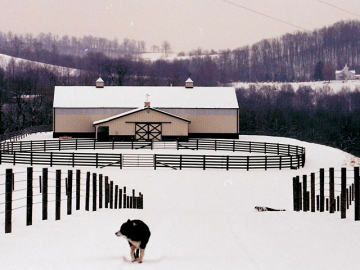
It’s important to know what your budget is for your project. I can direct you to good quality – affordable fencing, (and you can even take advantage of our February Sale coming up, too!), once I know which type of fence you think will work best with your horse. I can strongly recommend our High Impact fencingwhich comes in a 5″, 4″ and coated wire size. It is especially made for horses and stretches up to six inches on impact. It has a lifetime warranty and it comes in white, black and brown. With any horse we recommend no more that 9-11 inches between your rails. Depending on the ‘type’ of fence you choose as well as your post height (we suggest 54-56 inches), we can determine how many rails you will need.
What is your horse’s temperament? If down the road you find that your horse leans on your fence or is abusive to your fence, we always suggest adding electric fencing as one or two of your rails, or you can add it later. This will help to save on maintenance costs that may be very expensive; if not, you don’t protect your fencing. Horses understand that the electric signals ”Stay Away” and they respect its ‘bite’. Let’s talk further about what kind of a horse your thinking of getting and we can come up with a good plan and layout for you and your horse.
The size of your barn will depend on how many horses or animals you intend to have in the future. If you’re thinking you will only have one horse you will want to consider enough room for a stall (10′ x 12′ or 12′ x 12′), possibly a grooming area and tack room or area for your tack, room for hay and grain and/or room for any equipment (wheel barrow, muck bucket and picker, shovel and/or rakes, broom, tractor, hay cart – anything you need to care for your stalls and horse. Be sure to allow for the kind of bedding you choose. If you like straw, you will need to stack it along with your hay. If you want to use shavings in bales or in bulk, you will need ample room for either one. You may find that in your area you decide to choose to use large round hay or straw bales that will require a large area for storage unless you intend to purchase them as needed. Here are a few other suggestions to determine what size barn you may need (excerpt from a second email): I would suggest having at least 2 -12 x12′ horse stalls. I don’t know if you’re planning on getting horses in the future(?). I would consider having a 12 x 12′ tack and grain room and then a room for hay storage. If you consider the size of a stall – 12 x 12′ (one standard size) you can use these dimensions to start to determine you layout. If you have your 2 stalls on one side, and a third area for tack and grain, your dimension will be 12 x 36′, on the other side of your barn aisle, you can use the 12 x 36′ dimension for hay storage, straw or equipment. If you want a grooming area, add that to one side and then make the other side match it. You will need a place for water and buckets too. Your barn aisle should be wide enough to get tractors or equipment through it, but not excessively large if you’re intending on using cross-ties in your aisle (aprox. 10′-12′).
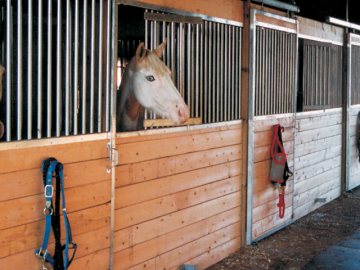
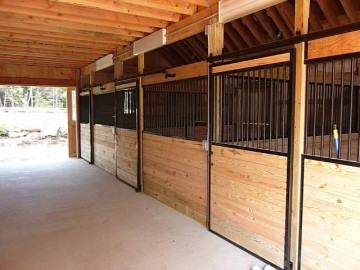
A good word of advice is to find a reputable horse owner in your area that can guide you and help you find a gentle ‘first’ horse. Older horses can be worth their weight in gold and can teach you how to ride well, despite their age. As you build up ‘time in the saddle’ and become a confident rider you may choose to find another horse that is better for your beginner to intermediate rider level . It all depends on how much time you spend riding and what you want to accomplish with your horse (trail riding, showing, jumping, dressage… the list goes on and on!). Be sure you find someone that will teach you the basics of riding and caring for your horse so that you have good experiences and can build good habits. It’s easier to start out doing things right , then to try to change badly formed habits later! Lastly, find out if the mares or geldings, that you are considering purchasing, are moody horses. Ask if they are ‘even tempered or if they are ‘quite spirited’. Ask if they have any ‘bad habits’. Ask why the owner is selling their horse. Any answers to these questions will give you hints to the horse’s behavior.* If you find a horse that you feel is ‘the right one’ see if you can visit the horse a few times before the actual purchase (or with a ‘returnable’ deposit) to be sure that whenever you choose to see him or her, you are happy with the horse’s behavior towards you. The whole purpose is to make sure you have found a good horse for your needs. It’s easy to purchase a horse, but it can take much longer to sell one.
I hope this helps you and new horse owners a like. I would be happy to talk to anyone that have further questions. Knowing more details about your farm, barn and horses will help me to give you specific information. I have owned horses since I was 5…and there have not been many years in-between that I did not have a barn full! That’s a least 45 years worth! So, if I can be of further help to you, just let me know. I’m excited for you, and wish you the very best in your adventure!
Just to let you know, I’m still talking to Colleen and hope that she can get as much information from myself and many others, before she purchases her horse and builds her barn! If you have any questions or need help with layout ideas for farm and barn planning, just let me know. Within our team we have experts that will help you with your specific horse farm needs! See you next month!
* When buying a horse listen for even the small descriptions that the owner may talk about. For example: A very quite horse may end up meaning the horse has to be encouraged with leg que’s to take every step. Or a horse ‘that gets board in its stall” could mean that it is a cribber, a kicker or a weaver. Ask as many questions that you can so that you can get direct answers to know the horse as well as you can before the purchase.

